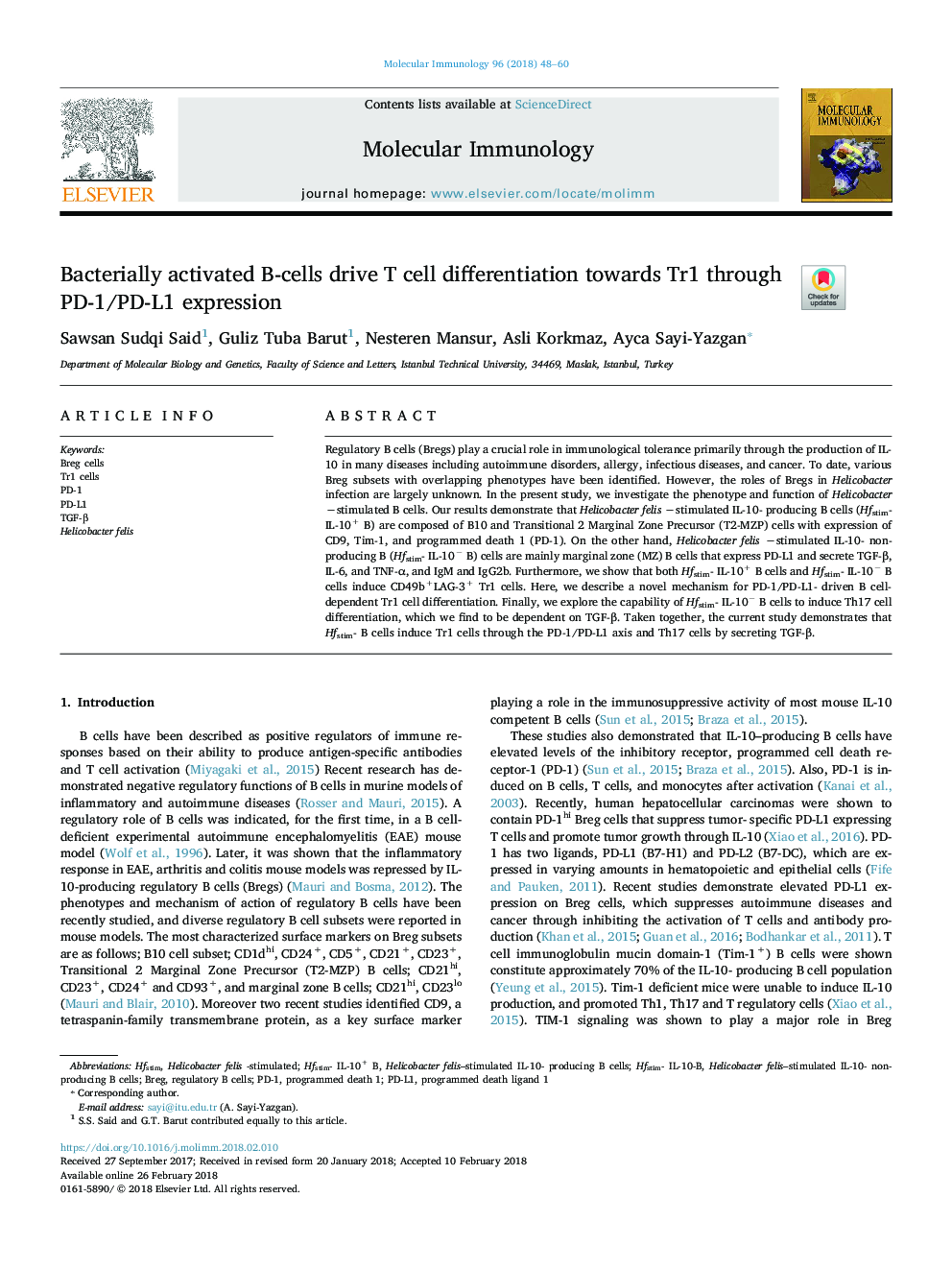| Article ID | Journal | Published Year | Pages | File Type |
|---|---|---|---|---|
| 8648552 | Molecular Immunology | 2018 | 13 Pages |
Abstract
Regulatory B cells (Bregs) play a crucial role in immunological tolerance primarily through the production of IL-10 in many diseases including autoimmune disorders, allergy, infectious diseases, and cancer. To date, various Breg subsets with overlapping phenotypes have been identified. However, the roles of Bregs in Helicobacter infection are largely unknown. In the present study, we investigate the phenotype and function of Helicobacter âstimulated B cells. Our results demonstrate that Helicobacter felis âstimulated IL-10- producing B cells (Hfstim- IL-10+ B) are composed of B10 and Transitional 2 Marginal Zone Precursor (T2-MZP) cells with expression of CD9, Tim-1, and programmed death 1 (PD-1). On the other hand, Helicobacter felis âstimulated IL-10- nonproducing B (Hfstim- IL-10â B) cells are mainly marginal zone (MZ) B cells that express PD-L1 and secrete TGF-β, IL-6, and TNF-α, and IgM and IgG2b. Furthermore, we show that both Hfstim- IL-10+ B cells and Hfstim- IL-10â B cells induce CD49b+LAG-3+ Tr1 cells. Here, we describe a novel mechanism for PD-1/PD-L1- driven B cell-dependent Tr1 cell differentiation. Finally, we explore the capability of Hfstim- IL-10â B cells to induce Th17 cell differentiation, which we find to be dependent on TGF-β. Taken together, the current study demonstrates that Hfstim- B cells induce Tr1 cells through the PD-1/PD-L1 axis and Th17 cells by secreting TGF-β.
Keywords
Related Topics
Life Sciences
Biochemistry, Genetics and Molecular Biology
Molecular Biology
Authors
Sawsan Sudqi Said, Guliz Tuba Barut, Nesteren Mansur, Asli Korkmaz, Ayca Sayi-Yazgan,
